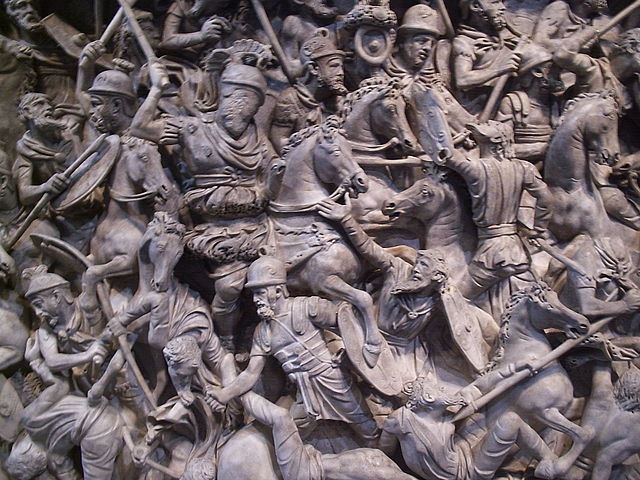Актуално от Южняка:
Сръбската държава финансира с милиони изследването на антично ДНК и създаването на международен екип от археолози и историци, който да интерпретира резултатите и да ги впише в по-голяма, кохеретна картина за миналото. Секвенсирането го извърши лабораторията на Д. Райх, а главният им изследовател е испанец. Изследването е многофазово, като преди около месец сърбите получиха резултатите на 43 новосеквенирани генома от балканите за периода 500-1500 г. от новата ера, които могат да сравнят с 45 новосеквенирани генома от епохата 500 АД - 0 АД (т.е. късна античност)., с 50 генома от 500 г. пр. Х - 0 АД и близо 200 генома от балканската желязна и бронзова епоха. Резултатите няма да се появят скоро в писмен вид, но някои бяха представени на конференция на сръбската академия на науките преди месец. Слайдът е от представянето. В Б-я е дълбоко вкоренена автохтонската теза. Тя не се подкрепя от нищо и никого в изследванията, но това няма значение. (То така или иначе за нас май единственото, което има значение е състоянието на хладилника).Искам да обърна внимание на следното от слайда - хаплогрупа I2-L621, с която днес са пълни Балканите, вкл. България, е нова. Тя не е открита в нито един образец от балканската късна античност и се появява след 500-та г., т.е. през ВПН, на Балканите. Друга група, която се среща само в образци от 5-ти век нататък, е R1a-Z283. Тя също отсъства напълно в образците от предходната епоха. Почти всички останали хаплогрупи също бележат промени в дистрибуцията си, но при тези две са най-мащабните. Е3б бележи тройна-до-четворна редукция на балканите, в сравнение с античността. Тя отсъства напълно и през бронзовата епоха, междувпрочем. Много от хромозомните хаплогрупи от късната античност и особено от античността напълно отсъстват през ранното средновековие - поели са към вечните ловни полета. Най-общо, генетичните данни сочат за мащабна, радикална демографска промяна, в случая със слайда - по мъжка линия, на два етапа: една промяна през късната античност (влизат близкоизточни, германски и някои степни линии) и втора промяна през ранното средновековие, която е още по-радикална. Няма да казвам с навлизането на кои народи е свързана, да не разстройвам тънката родна душевност с конспирации на тъмни сили срещо българската и македонската античност, да не кажа вечност. На "траките", предполагам, и освен тях на берберите, гетите, готите и хетите. Не може да няма и малко даки, както и група египетски фараони. Мисля, че в графиката за ВПН провиждам и атлант, както и един-двама от лемурия. Както и да е.Има видими разлики в дистрибуцията на игрек-хромозомните хаплогрупи. Прави впечатление и мащаба на изследването - сърбите са секвенирали общо близо 500 генома на индивиди от мъжки пол, презумирам че са секвенирали същата бройка и за индивиди от женски пол, което означава близо 1000 новосеквенирани балкански образци. Разбира се, те не са нито секвенирани, нито анализирани в Сърбия. ДНК анализът е правен в колаборация с Д. Райх. 1000 секвенирани антични генома, винтерпретирането на които се е впрегнала буквално цялата сръбска историческа и археологическа наука.... докато ние тука се снимаме със счупени дръжки от амфори рапортувани от медийните мисирки със статии, озаглавени "сензация!", "счупена амфора!" Амииии, добре. Веднъж се живее, така де. Останалото - то има ли останало? Както и да е, погледнете дистрибуцията на игрек-хромозомните хаплогрупи, които показват неотдавнашна поява на близо 70% от съвременните балкански хаплогрупи - дали като поява на празно място, дали като внезапен скок в честотата на дистрибуцята на съответната хаплогрупа. Най-общо, новопоявилите се през ВПН хаплогрупи в България и Сърбия са I2-L621, R1a-Z283, R1b-M269-L2, още един вариант на R1b и колкото и да е странно, съвременния вариант на G2a, който се появява (реитродукция, защото балканския неолит е пълен с него, но после хаплогрупата изчезва за няколко хилядолетия) на балканите някъде чак през късната античност, отнякъде. Ами, респект и за сръбската държава, и за науката им, бързо наваксват методическото изоставане, без никакви колебания и са финансирани без никакви колебания. Чудя се колко от образците им са всъщност събрани от територията на България. И не знам. Освен че има такива. В момента сме в някак странната ситуация всички съседни страни да имат примерно секвенсирано прабългарско днк и да са напълно наясно с произхода на прабългарите и да се подхилват, без нас самите. Уау. През това време ние маршируваме към Марс.









